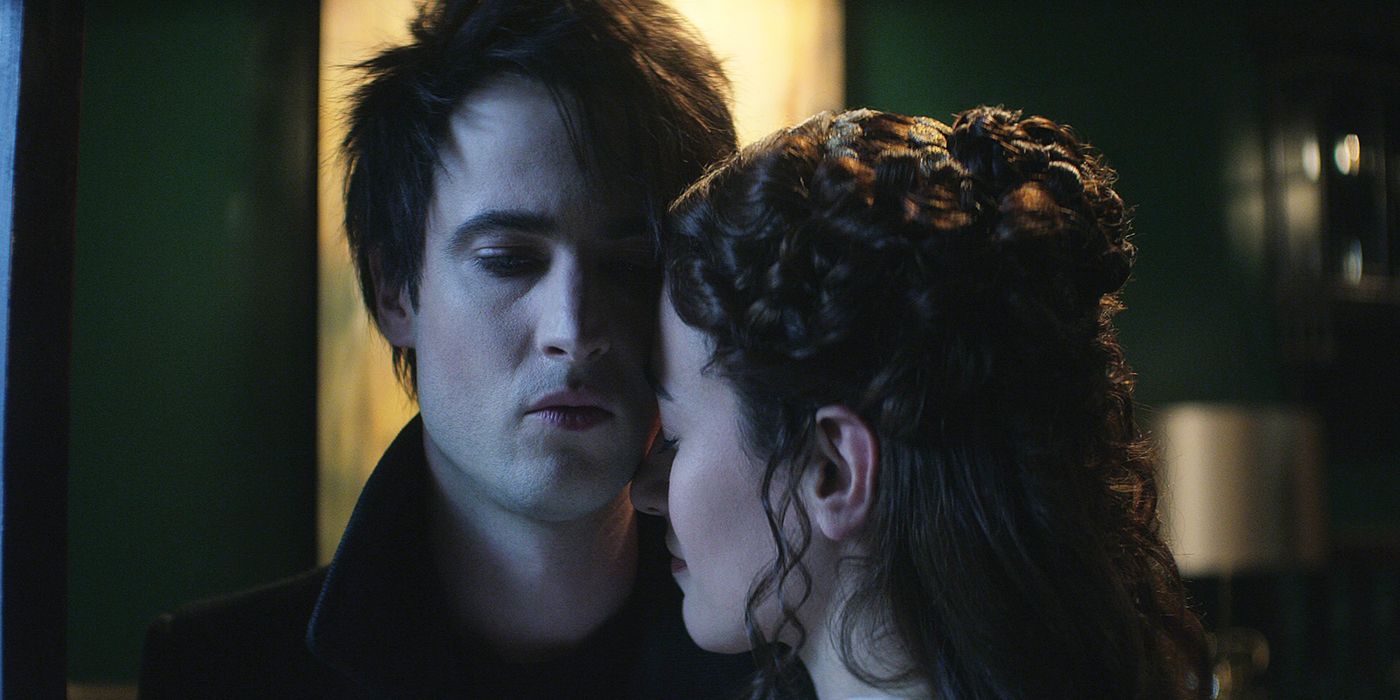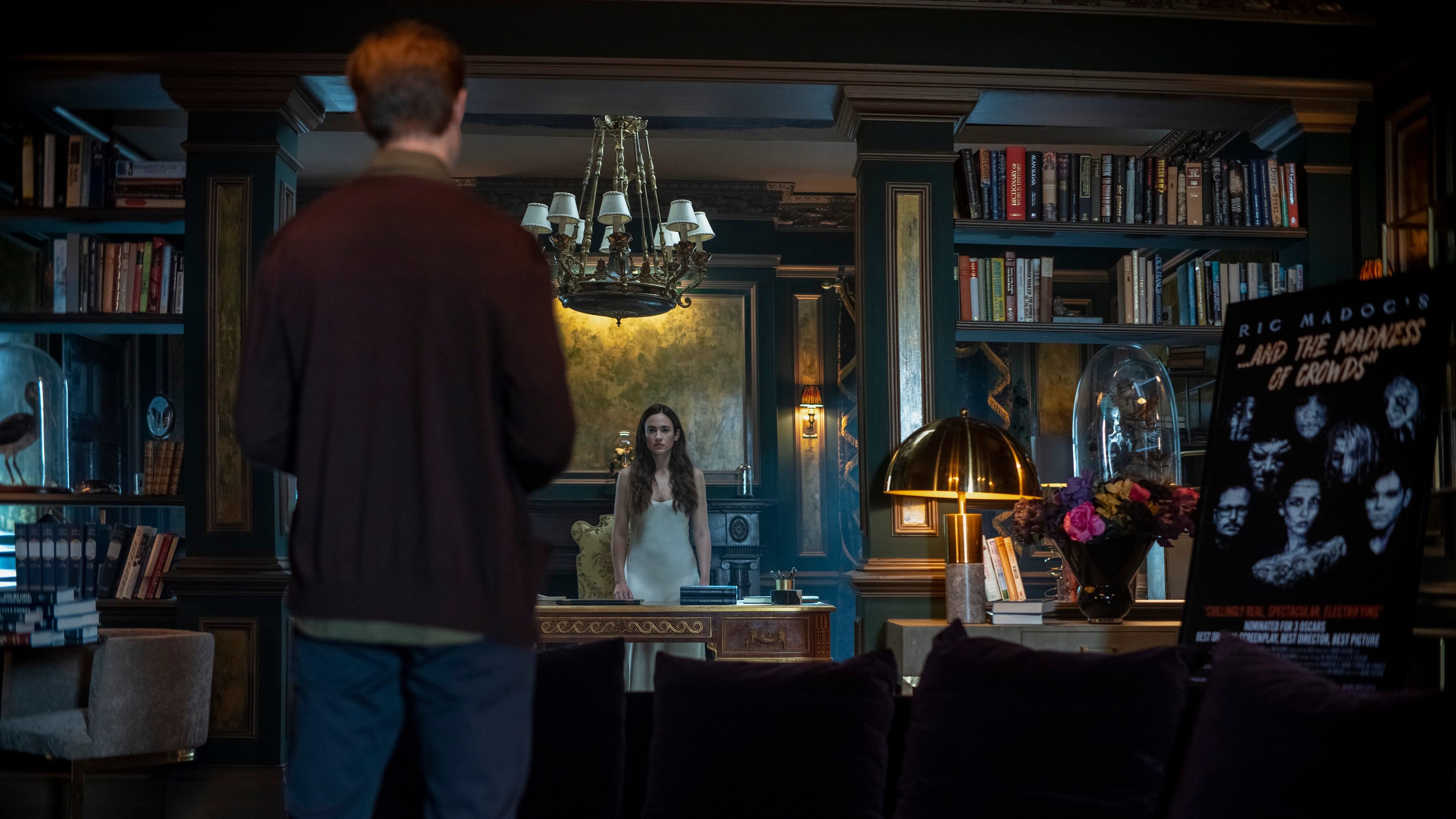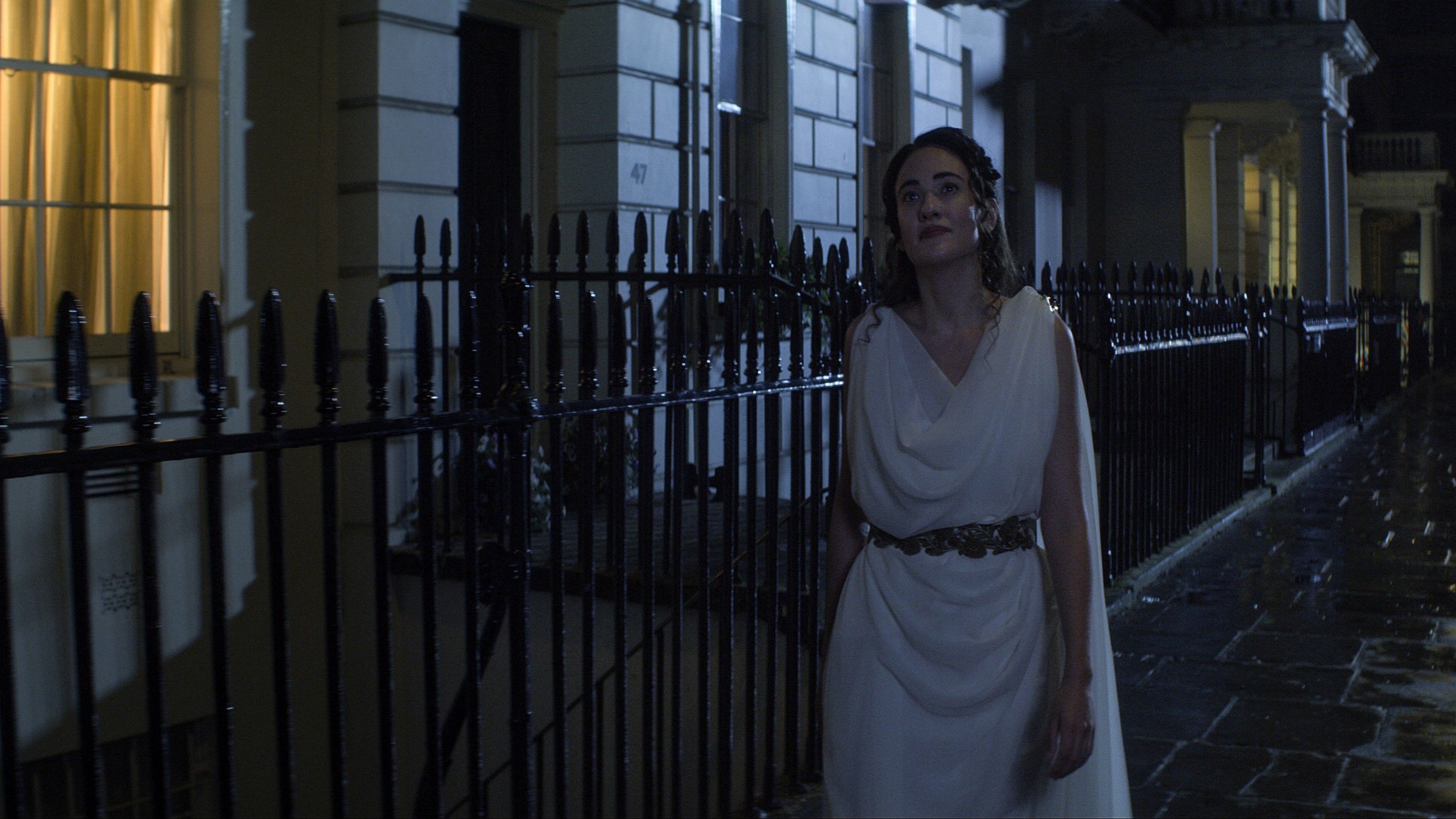Editor's Note: The following contains spoilers for the "Calliope" episode of the Netflix series, The Sandman.
The Sandman’s latest episode treats audiences to a double feature with “Dream of a Thousand Cats/Calliope.” Though both self-contained narratives involve Morpheus (Tom Sturridge), or Dream, he is not the main character of either story, and each is based on a standalone tale within the Sandman comics by Neil Gaiman. The second half of the episode focuses on the Greek Muse Calliope (Melissanthi Mahut) during her enslavement to hapless writer Richard Madoc (Arthur Darvill), and is an adaptation of the standalone tale of the same name that first appeared in the Sandman: Dream Country collection in 1990. Although Dream plays only a peripheral role in "Calliope," the episode provides a significant amount of information about his history. We learn that he and Calliope were once married, and that together they had a son, Orpheus — the same Orpheus from the Orpheus and Eurydice story. The episode intimates, also, that they did not part on good terms. Though "Calliope" is, as a whole, extremely faithful in its adaptation of Morpheus and Calliope’s relationship, it still contains some changes from the original comic books which, despite their subtlety, do alter the nature of their dynamic.
"Calliope" begins with the struggles of writer Richard Madoc. After writing a wildly successful debut novel, crippling writer’s block prevents him from even starting the sequel, even though it was due nine months ago, and he received the advance more than two years before. In the end, he hasn’t even begun to write it. In exchange for a bezoar, an old, forgotten writer, Erasmus Fry (Derek Jacobi), gives Madoc the Greek Muse Calliope, whom he had captured decades earlier. It was Calliope’s inspiration, Fry reveals, that allowed him to enjoy his illustrious career as a writer. According to the laws by which Fry became Calliope’s master, his decision to give her to Madoc now makes her Madoc’s slave until such a time as he should choose to free her. Fry advises Madoc to use force in his effort to use Calliope for inspiration. Though we don’t see it directly, the episode implies that Madoc takes Fry’s advice. The result is a novel that is even more successful than its predecessor, complete with a movie deal that offers Madoc significant creative control.
Calliope calls upon the fates for aid, but they are powerless to help her. The only one who can save her, they say, is her former husband Morpheus. Calliope dislikes this idea, convinced that Morpheus resents her and despising him in return; however, it turns out she has bigger problems, since he too is imprisoned and couldn't come to her aid even if he wished to. Two years later, Calliope reads in the newspaper that Unity Kinkaid (Sandra James-Young), one of the victims of the infamous “sleepy sickness” that occurred when Morpheus was first captured, has finally woken up. Knowing Morpheus must now be free, she calls upon him. Morpheus arrives, furious at how much she has suffered, and confronts Richard Madoc, promising that if he wants ideas, he “will have them in abundance.” At a lecture, Madoc has a nervous breakdown as his mind is overwhelmed by a torrent of inspiration, which he desperately writes down on a wall with his own fingers and blood for want of a pen. He begs Nora (Amita Suman), the nurse who first gave him the bezoar, to go to his house, find Calliope, and tell her that she’s free. Upon arriving in Calliope’s room, however, Nora finds the muse already gone — only a copy of Erasmus Fry’s book Here Comes a Candle remains in her place. Calliope, finally free, thanks Morpheus for his help, noting that time has made him more compassionate. She requests that Morpheus free Madoc from his insanity. Morpheus releases Madoc, and Madoc finds his mind as empty as it was before he met Calliope. Calliope confesses she thought Morpheus still hated her for leaving him. Morpheus tells her he doesn't; nevertheless, when she requests permission to visit him in the Dreaming so that they can properly grieve the passing of their son, he replies “one day, perhaps, but…” Calliope says she understands, thanks him, wishes him well, and departs.
Calliope’s relationship with Dream as it is portrayed in the episode, "Calliope." is a remarkably faithful adaptation of their relationship as it is presented in the comic book narrative of the same name. Even the dialogue is practically the same. There are, however, a few crucial differences — the first being that, in the show, Calliope was once Morpheus’s wife, rather than just his lover. In the original comics, the two were never married. The fates tell Calliope “like you, your one-time admirer has been ensnared by mortals,” while in the show the line is changed to “like you, your former husband has been ensnared by mortals.” The fact that the lines are almost identical except for this phrase indicates that the change was almost certainly deliberate on the part of the writers. Whatever the intention, though only a few words are altered, they succeed in placing Calliope in a distinct context in Morpheus’ past.
Already we have seen Morpheus’ former lover Nada (Deborah Oyelade), rotting in hell after some unspecified offense against him. Morpheus loves her even after her offense, and after 10,000 years, though he has not yet forgiven her. Calliope appears in the first season relatively close to Nada’s first appearance. Neither the show nor the comics provide much information about Morpheus and Calliope’s relationship. However, making her Morpheus’s wife instead of his lover indicates that the nature of this relationship was fundamentally different that the relationship between Morpheus and Nada, and that Calliope represents a fundamentally different era of Morpheus’s life.
In Netflix’s The Sandman, Calliope eventually discovers that Morpheus is free after she reads about Unity Kinkaid in the paper; she then calls him through a spell that involves throwing a piece of paper with his name on it into the fire. In the comics, Morpheus appears without Calliope calling him, presumably having heard about her plight, and she does not know that he’s free until he arrives. Then, as in the show, she does plead with him to help her. Dream and Calliope’s interactions in the Netflix series are softer than those in the comics — in the latter, he swoops in and immediately responds to Calliope’s request without mincing words. He doesn't say anything to her about their relationship before he confronts Madoc. It’s difficult to tell what he feels when he sees her again for the first time. In the show, however, Dream and Calliope’s exchange about Madoc’s punishment is rife with longing, and it’s evident that his desire to punish Madoc comes not only from a sense of justice but from the fact that he still cares deeply for Calliope. He confesses his emotional response to hearing from her after she said she would never speak to him again — “When I heard you call to me, even after all this time…Let me help you.”
His rage against Richard Madoc additionally makes it clearer what kind of abuse Calliope has been suffering. For both Fry and Madoc, extorting inspiration from Calliope in the comics manifests itself as literal rape, and part of what made adapting “Calliope” such a challenge was the sexual abuse at the center of the original story. In an interview with Express.co.uk, "Calliope" director Louise Hooper says it was important to shoot the episode "in a way that [Calliope] still has her strength and dignity...We didn't want to see her in scantily clad clothes on or be too salacious, she's a goddess." About the rape scenes specifically, she adds that "Neither Allan Heinberg nor Neil Gaiman thought it was appropriate." Having Calliope actively summon Dream for help also gives her more agency in the narrative, contributing to the dignity that Gaiman, Hooper, and showrunner Allan Heinberg were determined to give her.
Finally, the end of "Calliope" offers some hope for the former couple. In the comics, Calliope asks Morpheus if she can one day visit him in the Dreaming, and despite the fact that he no longer hates her he responds “I do not think that would be a good idea, Calliope.” In the show, on the other hand, he says, “one day, perhaps, but…” and is unable to finish his sentence. Dream no longer hates Calliope in both versions of the story, but in the comics his farewell is somewhat brusque. In the show, that tenderness from earlier still shows, even though it’s clear he’s not yet ready for her to visit him again. Though we can only wait to see what later seasons bring, Dream's changed response indicates that he may someday be ready to receive her into his life again, despite the hurt their separation caused.




